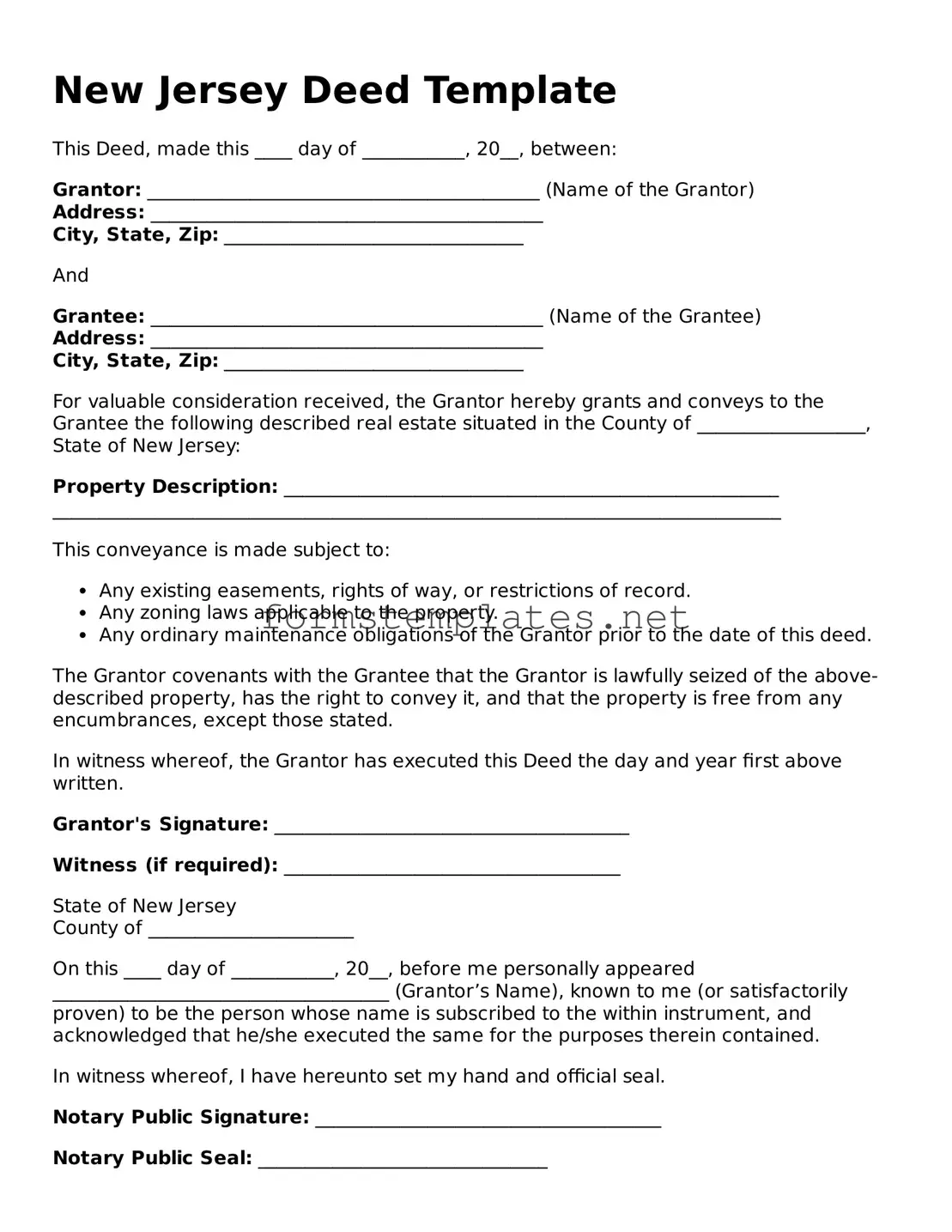New Jersey Deed Template
This Deed, made this ____ day of ___________, 20__, between:
Grantor: __________________________________________ (Name of the Grantor)
Address: __________________________________________
City, State, Zip: ________________________________
And
Grantee: __________________________________________ (Name of the Grantee)
Address: __________________________________________
City, State, Zip: ________________________________
For valuable consideration received, the Grantor hereby grants and conveys to the Grantee the following described real estate situated in the County of __________________, State of New Jersey:
Property Description: _____________________________________________________
______________________________________________________________________________
This conveyance is made subject to:
- Any existing easements, rights of way, or restrictions of record.
- Any zoning laws applicable to the property.
- Any ordinary maintenance obligations of the Grantor prior to the date of this deed.
The Grantor covenants with the Grantee that the Grantor is lawfully seized of the above-described property, has the right to convey it, and that the property is free from any encumbrances, except those stated.
In witness whereof, the Grantor has executed this Deed the day and year first above written.
Grantor's Signature: ______________________________________
Witness (if required): ____________________________________
State of New Jersey
County of ______________________
On this ____ day of ___________, 20__, before me personally appeared ____________________________________ (Grantor’s Name), known to me (or satisfactorily proven) to be the person whose name is subscribed to the within instrument, and acknowledged that he/she executed the same for the purposes therein contained.
In witness whereof, I have hereunto set my hand and official seal.
Notary Public Signature: _____________________________________
Notary Public Seal: _______________________________
My Commission Expires: ______________________
